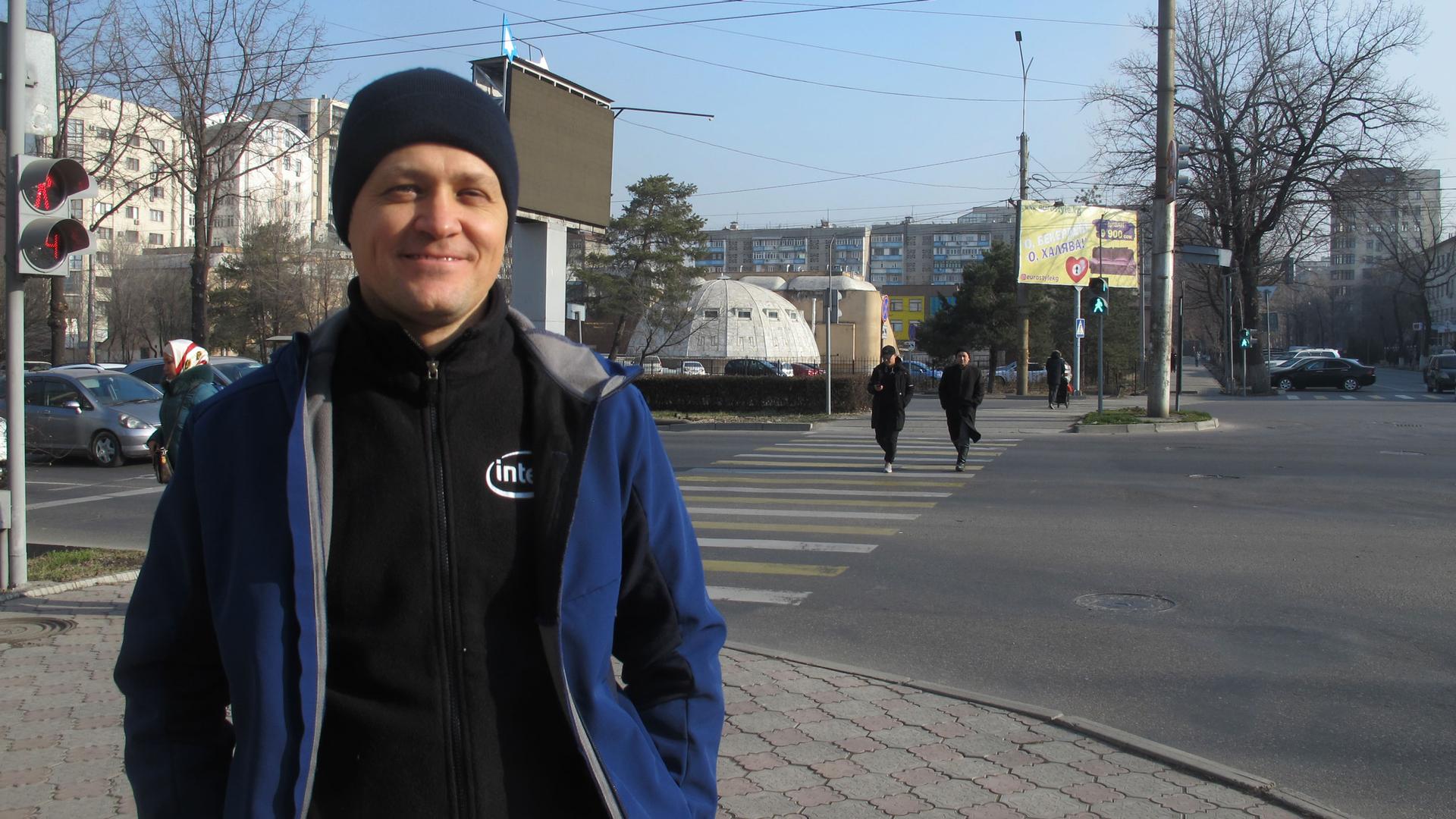This citizen scientist is on a mission to help gauge air quality in Central Asia
On a recent evening in Bishkek, the capital of Kyrgyzstan, a thick fog settled over the city. Through the streetlights, tendrils of smoke seemed to waft through the chilly air.
But the haze did not come from a distant wildfire — it is manmade air pollution that regularly permeates Central Asian cities like Bishkek. The problem becomes acute in winter because many former Soviet cities in Central Asia burn large amounts of polluting coal.
Related: World leaders agree to help South Africa phase out coal
That night, a nearby air sensor recorded the local Air Quality Index (AQI) as 295. When the AQI tops 300, air quality is considered a health emergency, according to the US government. The AQI in Central Asian countries like Kazakhstan, Kyrgyzstan and Tajikistan often tops 400. In cities like Almaty, Kazakhstan, the AQI can regularly climb up to 600 — two times the level deemed a hazardous health emergency.
Related: A new study highlights the urgent need to regulate phthalates in plastic
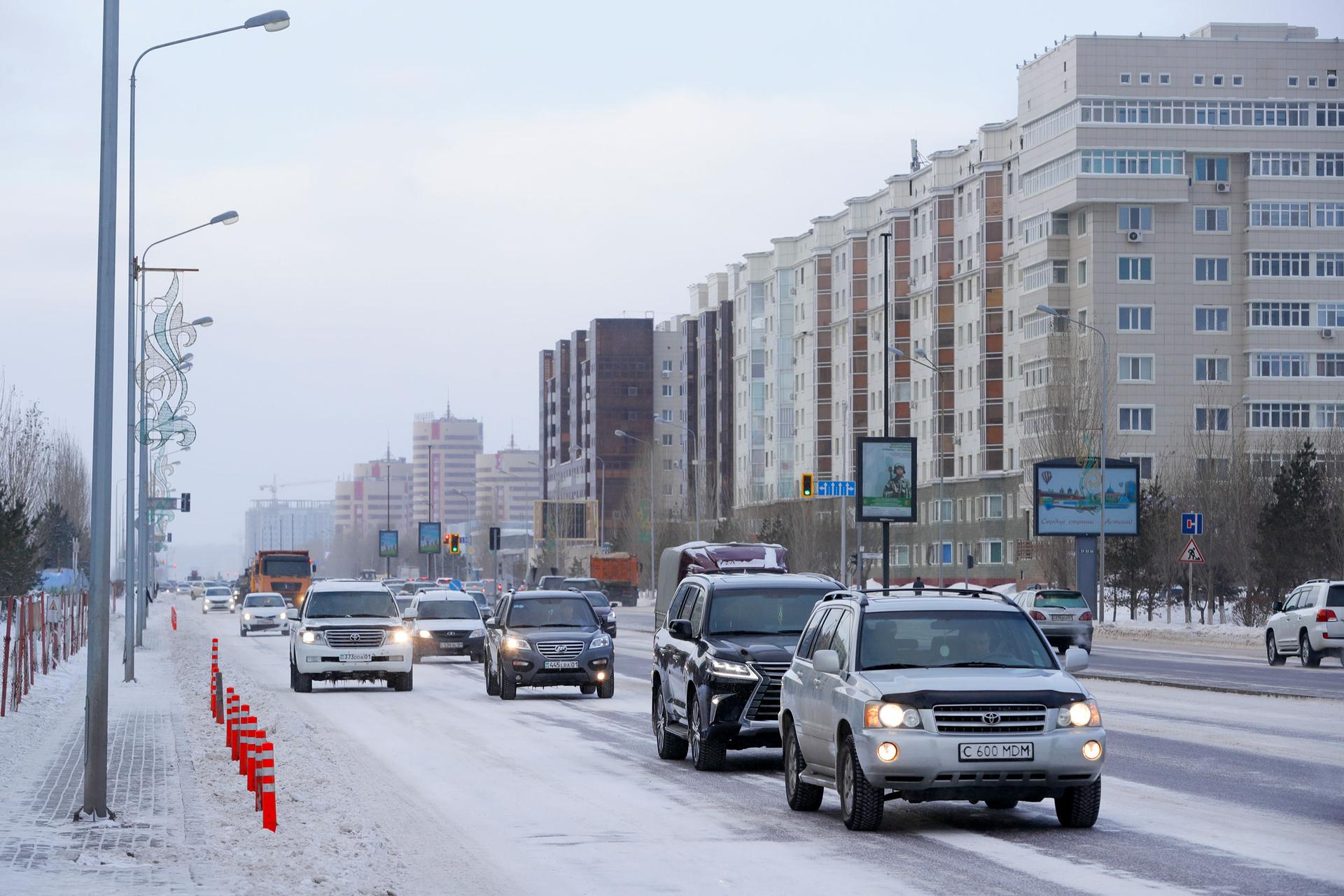
Until recently, residents of Central Asian cities didn’t have a good way to check the air quality before stepping outside in the winter, when pollution especially stagnates in the air. Now, citizen scientists like Pavel Plotitsyn are taking matters into their own hands, building low-cost air sensors and a website to help gauge air quality on any given day.
“Kazakhstan was literally a blank spot on international air pollution maps. … There was no real-time air data.”
“Kazakhstan was literally a blank spot on international air pollution maps,” said Plotitsyn, a manager at Intel who works on air quality issues in Kazakhstan as a volunteer. “There was no real-time air data.”
Plotitsyn used to stick his head out the window during winter months to do a smell test.
“And if it smells like burning rubber it means that we should close the window,” Plotitsyn said.
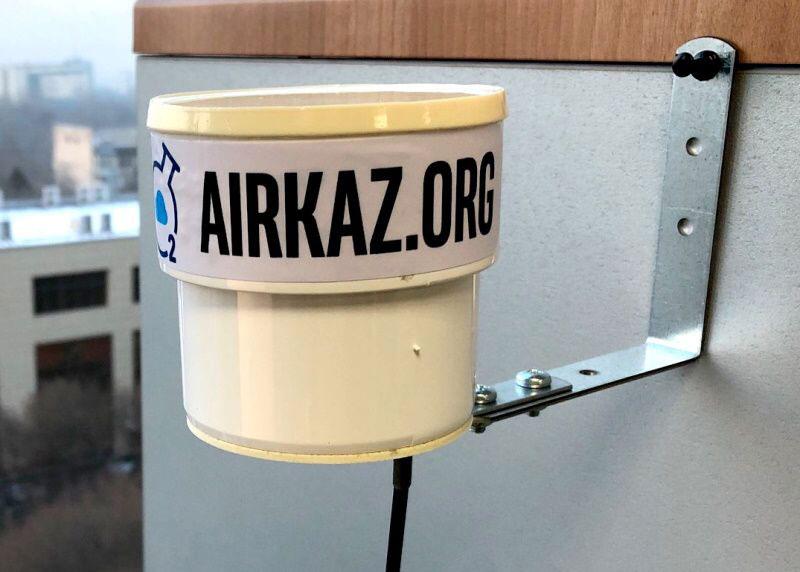
In 2017, he decided to build his own low-cost air sensor, simply to gauge the air quality and what risk it might pose to his wife and children. His friends were intrigued and asked for guidance on how to set up their own sensors. Plotitsyn eventually established a website called AirKaz.org that displays the sensor data and tracks AQI levels in real time, helping to fill those data gaps.
Complete strangers started reaching out to Plotitsyn asking for advice setting up sensors.
“Usually, people living in [these places] experience such levels of pollution during their whole life,” Plotitsyn said. “They cannot avoid it. You can avoid dirty water — you can clean water to drink. But you cannot choose air. You have no choice but to breathe the air which is around you.”
Outdated electric plants that burn low-grade coal are a big part of the air quality problem in Central Asia. But locals also blame recent urban growth and the use of outdated cars with defective exhaust systems.
In poorer neighborhoods, locals often burn trash, tires and fabric to save money on heating during winter months, which only exacerbates the problem.
Related: Kyrgyzstan’s remaining snow leopards under threat due to climate change, COVID
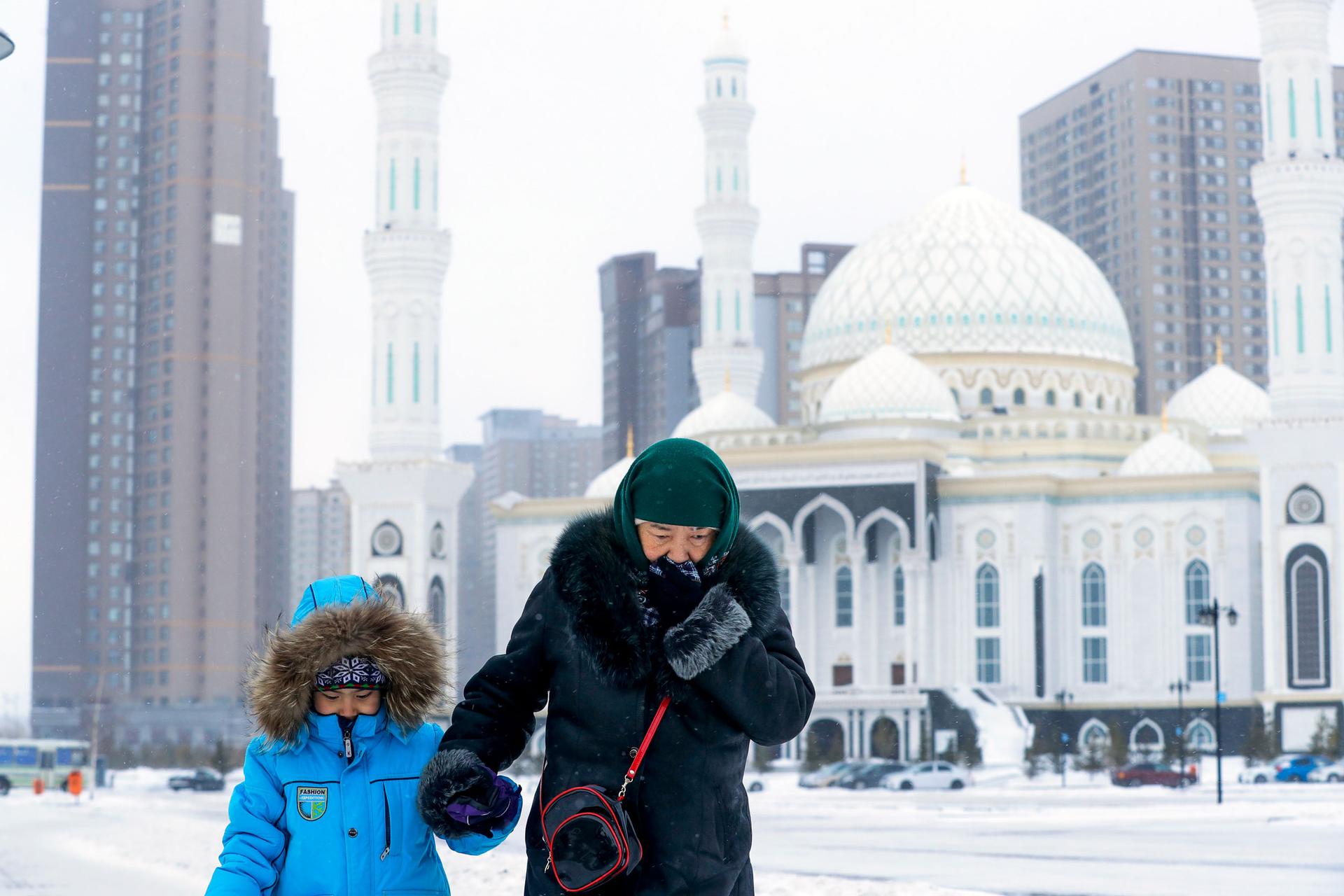
Central Asia’s geography also magnifies the issue. Towering, snow-covered mountains in ranges like the Tian Shan trap air in a regular pattern called thermal inversion. This is one of the driving forces behind poor air quality in many large cities built near large mountains such as Mexico City and Los Angeles.
Today, Plotitsyn has assembled a network of citizen scientists throughout Kazakhstan who provide air data to the website. In 2018, they set up a network of air sensors in Tajikistan, and last year, they expanded to Kyrgyzstan. About 1,000 people visit the site each day.
Related: This ‘living lab’ in Sweden experiments with the future of sustainable cities
Keeping the sensors running and expanding the network is a “weekend project” for Plotitsyn, who still works at Intel. On Saturdays, he builds sensors about the size of a matchbox that sit in small sections of PVC pipe with a lid on top to keep out rain and snow.
Plotitsyn’s sensors cost about $150 and upload data directly to a server through cell networks. He said you can order cheaper, ready-made sensors online that run as little as $50, but they connect through Wi-Fi, which can be unreliable for providing continuous, real-time data.

Plotitsyn’s sensors require some soldering skills, but he said with some motivation, it’s a relatively low learning curve.
“Even my son can do it,” he said with a smile.
Before the website launch, the Kazakh government did have their own air sensors, but only released air quality data on a monthly basis. Citizens had to pay the government to get access to more detailed data.
After the website launch, the government started releasing their own air data for free and also incorporated readings from Plotitsyn’s sensors. The local Almaty government has also set up video monitors around the city that show Plotitsyn’s air data to motorists and passersby, giving thousands of people access to this information.
Plotitsyn’s air data was also added to the international air monitoring website IQAir.com. The head of IQAir North America, Glory Dolphin Hammes, said citizen scientists like Plotitsyn can often provide better air data than their governments.
“Citizen scientists are early adopters on what is the most innovative technology. And they can do this faster and better than governments can because they’re not bound by laws and regulations.”
“Citizen scientists are early adopters on what is the most innovative technology. And they can do this faster and better than governments can because they’re not bound by laws and regulations,” she said.
Hammes also said that government regulation just can’t keep up with the rapid pace of technological advancements in air sensors. Citizen scientists can often get new air sensor networks built before governments can because they can avoid the bureaucracy.
Sensors built by citizen scientists like Plotitsyn are often more cost-effective, too. Hammes said that many government-approved sensors currently cost between $15,000 to $20,000, whereas private citizens could set up 100 low-cost sensors for that price.
“Why would I want to have one antiquated, outdated regulatory monitor when I could have 100 data points at the tip of my fingers?” Hammes said.
IQAir.com has launched a major international effort to recruit new citizen scientists to contribute air data. Hammes said there are still huge blank spots where there isn’t good air data, mainly in South America, throughout Africa and parts of the Middle East.
But citizen science is moving quickly to fill those gaps.
“The number of air quality stations from citizen scientists in 2022 will surpass all government stations — period — on the planet.”
“The number of air quality stations from citizen scientists in 2022 will surpass all government stations — period — on the planet,” Hammes said.
There are some downsides to the low-cost sensors that have come on the market in recent years. Sometimes, they’re not as accurate: A sensor placed by a highway or a neighbor barbecuing can give erroneous or skewed data.
Still, most experts agree that having more sensors provides far more accurate measures of air quality than government data alone.
Since Plotitsyn launched AirKaz.org, his home city, Almaty, often appears as one of the most-polluted cities in the world on air-quality maps.
“You cannot fix [a] problem if you’re not talking about it.”
“For us, it’s a big win, that now Kazakhstan is visible on those maps,” Plotitsyn said. “This type of information should not be hidden. You cannot fix [a] problem if you’re not talking about it.”
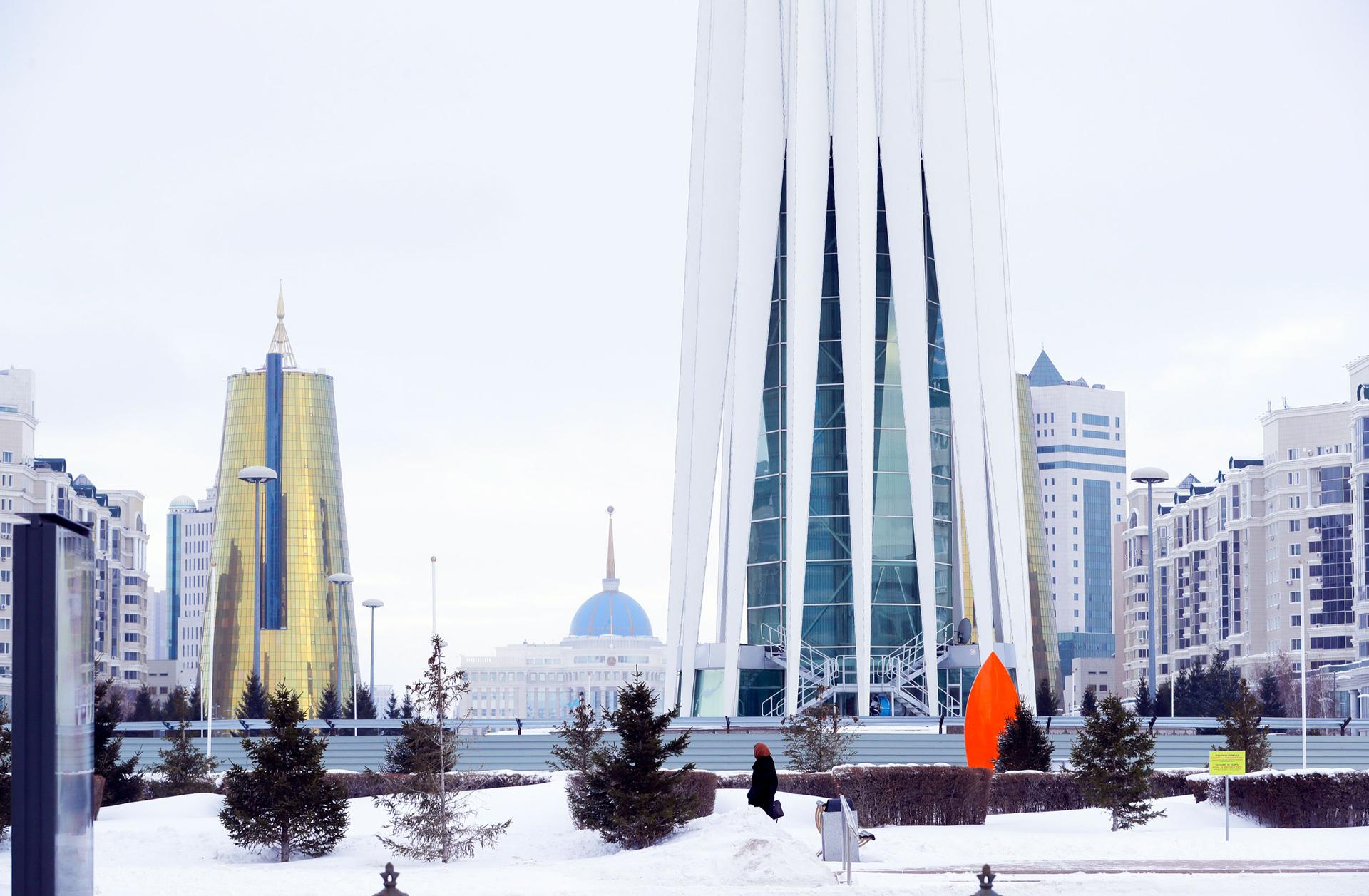
So far, talking about the problem hasn’t led to fixing it, though.
Plotitsyn said the Kazakh government still hasn’t taken steps to overhaul the country’s coal plants — one of the main causes of poor air quality.
On a recent sunny morning in Bishkek, Kyrgyzstan, Plotitsyn walked toward the city’s main coal-fired power plant while on a business trip there. In the distance, the tall smokestack from the power plant belched what appeared to be a white cloud into the sky.
“Technically it looks like a cloud, but it starts to come down as solid particles that go directly to our lungs,” Plotitsyn said.
Nearby sensors on his website recorded an AQI of 170 and 156 – numbers that calculate levels of fine particulate matter that causes illnesses like cancer as well as other pollutants like ground-level ozone.
Plotitsyn remarked that it was time to go indoors.
When the air gets this bad, Plotitsyn recommends staying inside. Going outside requires a mask — preferably an N-95.
